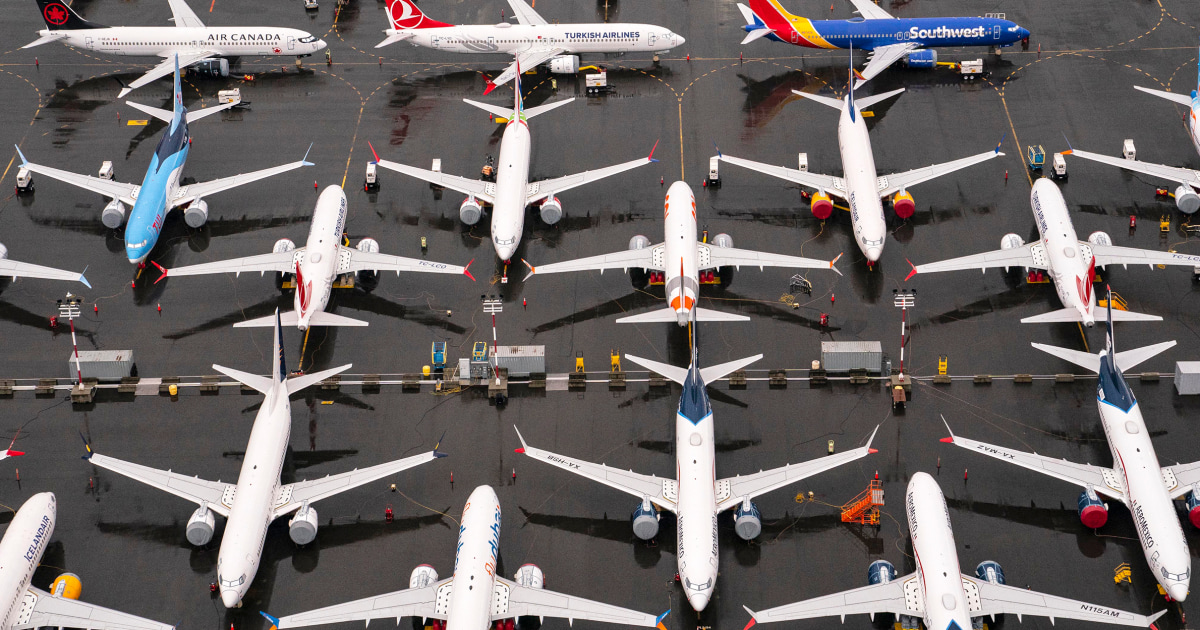Boeing says it’s turning things around a year after the Alaska Airlines incident
Boeing said Friday that it had hit several internal targets on safety and quality control despite a series of deadly crashes, near catastrophes and embarrassing incidents that has seen its share price plunge and airlines around the world pull some of its planes.
The company said in a news release that it had made improvements “in multiple areas including safety culture, training, simplifying their processes, and eliminating defects.”
The announcement comes less than a week after the latest deadly crash involving one of its aircraft. In the worst air disaster in South Korean history, 179 people were killed when a Boeing 737-800 belly-landed and skidded off the runway at Muan International Airport.
Even so, in a section titled ‘Elevating Safety & Quality Culture,’ Boeing said it has “addressed over 70% of action items in commercial airplanes production based on employee feedback” and implemented key criteria “across Final Assembly for the 737, 787 and portions of 767 and 777” to “mitigate risk.”
It has nonetheless been a difficult year for the company that — along with Europe’s Airbus — exercises a virtual duopoly over the airline market. In early 2024, a crucial fuselage panel blew out of an Alaska Airlines jet, its largest union stopped producing airplanes, and problems with its Starliner space capsule have left two astronauts stranded in orbit.
These incidents came after several fatal crashes involving Boeing jets in recent years, including Boeing planes operated by Indonesia’s Lion Air and Ethiopian Airlines, that led to the various aviation authorities issuing grounding orders against specific Boeing jets.
All of that has combined to strip almost a third of the value off its share price since the end of 2023.
During Boeing’s difficult 2024, whistleblowers from within the company came forward with complaints about shambolic internal processes in the production of its 737 and 787 aircraft.
One of those whistleblowers, John Barnett, was found to have died from a self-inflicted gunshot wound at age 62. After his death, his family said his attempts to highlight serious concerns were met with “a culture of concealment” that valued “profits over safety.”
Since then, the company has changed CEOs with the new chief executive, Robert “Kelly” Ortberg, undertaking a massive turnaround plan since he was installed in August. In a letter to employees in October, he stressed the need for a “fundamental culture change,” going further than his recent predecessors in acknowledging the damage to Boeing’s reputation.
“This is a big ship that will take some time to turn, but when it does, it has the capacity to be great again,” Ortberg said in the letter, according to Reuters.
But just two months later in October, the Federal Aviation Administration said it was opening a three-month review of Boeing’s compliance with safety regulations as part of its intensified scrutiny of the company’s operations.
Asked by NBC News’ Lester Holt whether Boeing was too big to fail, FAA Administrator Michael Whitaker said last month that the company had failed “and they’re going through a pretty substantial reset. They have the resources to do this reset and to rebuild in a much higher quality and safer manner.”
But Boeing’s news release highlights the company’s investment in workforce training, with “strengthened training for mechanics and quality inspectors with an enhanced support system,” as well as adding “hundreds of hours of new curriculum to training programs” that include “quality proficiency” and “Positive Safety Culture.”
In addition, Boeing said that it is trying to simplify its processes, specifically highlighting the installation plans of its 737 production line, as well as “eliminating defects.” The 737 aircraft was mentioned when the company said its operation with Spirit AeroSystems had “significantly reduced defects” in assembling the planes’ fuselages by increasing inspection points. Boeing said it had also “fully implemented” new procedures around the final assembly of its 737 and 787 aircraft that tracks and secures parts “to prevent loss or improper use.”
The timing of Boeing’s statement will not be lost on many in the aerospace industry. The release itself notes both the 53-day strike and the Alaska Airlines incident that kicked off the company’s awful year.
Sunday marks the first anniversary of the near catastrophe aboard Alaska Airlines Flight 1282 and the company will likely be keen to show its progress in the year since.


